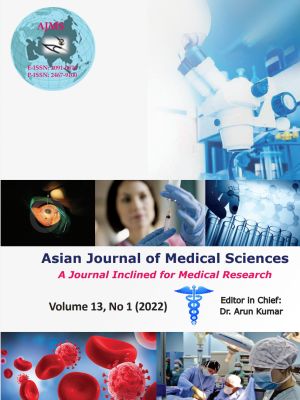A prospective comparative study of surgical release of carpal tunnel syndrome with and without flexor tenosynovectomy
Keywords:
Carpal tunnel syndrome, Flexor tendon, TenosynovectomyAbstract
Background: Carpal tunnel syndrome (CTS) is a common condition causing hand pain and numbness. The rationale of tenosynovectomy is to remove the flexor tenosynovium that is contributing to increased volume within the carpal canal, thus removal of this tenosynovium should give more space for the median nerve and there by relief from symptoms.
Aims and Objectives: The main objective of our study was to assess the role of routine flexor tenosynovectomy in the treatment of CTS.
Materials and Methods: Eighty-six hands with CTS were randomized into two groups, either to carpal tunnel release with or without flexor tenosynovectomy. All patients were requested to fill up the self-administered questionnaire for the assessment of symptom severity and functional status, examined for 2-point discrimination, grip and pinch strength, scar tenderness and patient satisfaction score preoperatively, 2 weeks, 1 month, and 6 months follow-up.
Results: After the surgical release, both groups improved significantly with respect to symptom severity and functional status, 2-point discrimination, grip and pinch strength, scar tenderness and patient satisfaction score but there was no significant difference between the two groups. There were two cases of post-operative wound infection and one case of mild reflex sympathetic dystrophy.
Conclusion: We conclude that routine flexor tenosynovectomy during surgical release of carpal tunnel in patients with CTS does not provide any added benefit nor does it increase any morbidity.
Downloads
Downloads
Published
How to Cite
Issue
Section
License
Copyright (c) 2021 Asian Journal of Medical Sciences

This work is licensed under a Creative Commons Attribution-NonCommercial 4.0 International License.
Authors who publish with this journal agree to the following terms:
- The journal holds copyright and publishes the work under a Creative Commons CC-BY-NC license that permits use, distribution and reprduction in any medium, provided the original work is properly cited and is not used for commercial purposes. The journal should be recognised as the original publisher of this work.
- Authors are able to enter into separate, additional contractual arrangements for the non-exclusive distribution of the journal's published version of the work (e.g., post it to an institutional repository or publish it in a book), with an acknowledgement of its initial publication in this journal.
- Authors are permitted and encouraged to post their work online (e.g., in institutional repositories or on their website) prior to and during the submission process, as it can lead to productive exchanges, as well as earlier and greater citation of published work (See The Effect of Open Access).




